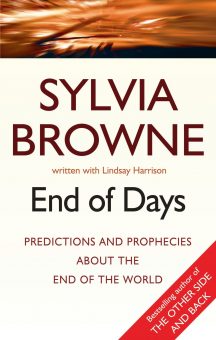A priest named Gerard of Poehlde, on the other hand, was sure that Christ’s thousand-year reign had actually begun with Constantine’s rise to power. Therefore, Satan would escape his bondage in 1147 and overtake the Church.
John of Toledo, a Spanish astrologer, became convinced that a specific alignment of planets in 1186 was a sign that the world would be destroyed by famine, earthquakes, catastrophic storms, and volcanoes.
According to an Italian mystic and theologian named Joachim of Fiore, the Antichrist was already incarnated on Earth and would be defeated by King Richard I of England, heralding the great rebirth of the world in 1205.
In 1260, Brother Arnold, a Dominican monk, predicted an impending end of the world in which he would call upon Jesus to judge Church leaders around the world, during which Jesus would reveal the Pope to be the long-awaited Antichrist.
Pope Innocent III announced 1284 as the end of the world, arriving at that date by adding 666 years, from the book of Revelation, to the date when Islam was founded.
In 1300, a Franciscan alchemist named Jean de Roquetaillade published such predictions as the arrival of the Antichrist in 1366, to be followed no later than 1370 by a millennial Sabbath, and Jerusalem becoming the center of the world.
A society called the Apostolic Brethren, which believed that they were the new Roman Church authority, were sure that in 1307 all Church clergy, including the Pope, would be killed in a great war that would lead to the Age of the Spirit.
Czechoslovakian archdeacon Militz of Kromeriz insisted that the Antichrist would reveal himself by 1367, ushering in the end of the world.
In 1496, many Church leaders began anticipating the Apocalypse based on the fact that it would soon be fifteen hundred years after the birth of Christ.
Astrologers predicted a massive global flood that would destroy the world in 1524.
Reformist Hans Hut made it his business to round up 144,000 elect saints to prepare for Jesus’s return in 1528.
A German visionary named Melchior Hoffman prophesied the Second Coming of Christ in 1533 and the reestablishment of Jerusalem in Strassburg, Germany. Following the lead of the book of Revelation, he believed that 144,000 faithful would be saved, but the rest of the world would perish in flames.
Astrologer Richard Harvey foresaw the Second Coming of Christ at noon on April 28, 1583.
According to Dominican monk, poet, and philosopher Tomasso Campanella, the sun and Earth were destined to collide in 1603.
In 1661, a group called the Fifth Monarchy Men decided that by trying to overtake parliament they could prove to God that faith was alive and well on Earth and it was time for Jesus to return and claim his rightful millennial kingdom.
Christopher Columbus wrote The Book of Prophecies in the late fifteenth and early sixteenth centuries, including a prediction that the end of the world would happen in 1658.
When the Russian Orthodox Church went through a reformation, a group that called itself the Old Believers broke from the Church and began its own ultraconservative, ultratraditional faith. Included in that faith was a belief that the world would end in 1669. Between 1669 and 1690 nearly twenty thousand Old Believers burned themselves to death rather than be faced with the Antichrist.
Seventeenth-century Baptist Benjamin Keach saw the end of the world happening in 1689, as did French prophet Pierre Jurieu.
Puritan minister and renowned witch hunter Cotton Mather predicted the end of the world three separate times, the first being 1697.
On October 13, 1736, many braced for a great global flood predicted by William Whitson, a British theologian and mathematician.
Pages: 1 2 3 4 5 6 7 8 9 10 11 12 13 14 15 16 17 18 19 20 21 22 23 24 25 26 27 28 29 30 31 32 33 34 35 36 37 38 39 40 41 42 43 44 45 46 47 48 49 50 51 52 53 54 55 56 57 58 59 60 61 62 63 64 65 66 67 68 69 70 71 72 73 74 75 76 77 78 79 80 81 82 83 84 85 86 87 88 89 90 91 92 93 94 95 96 97 98 99 100 101 102 103 104 105 106 107 108 109 110 111 112 113 114 115 116 117 118 119 120




